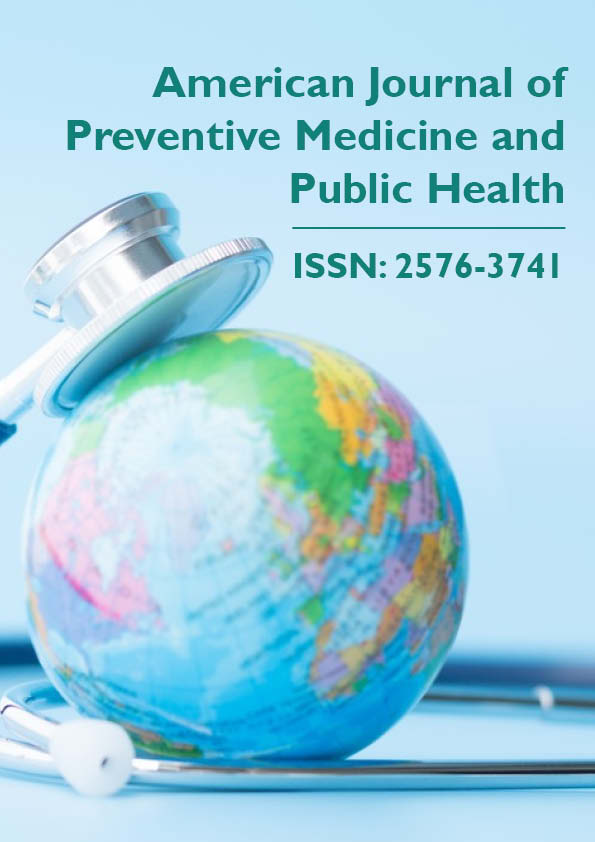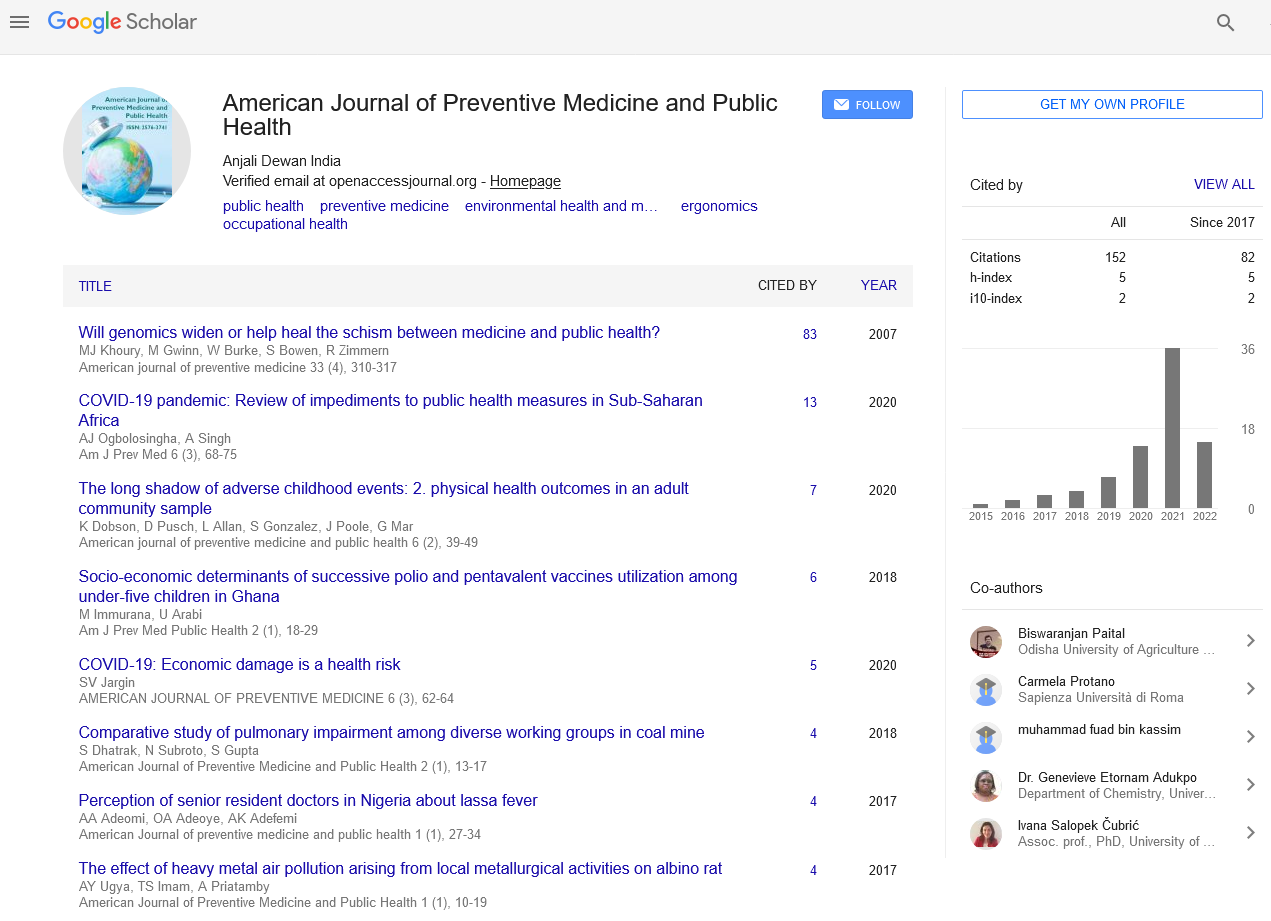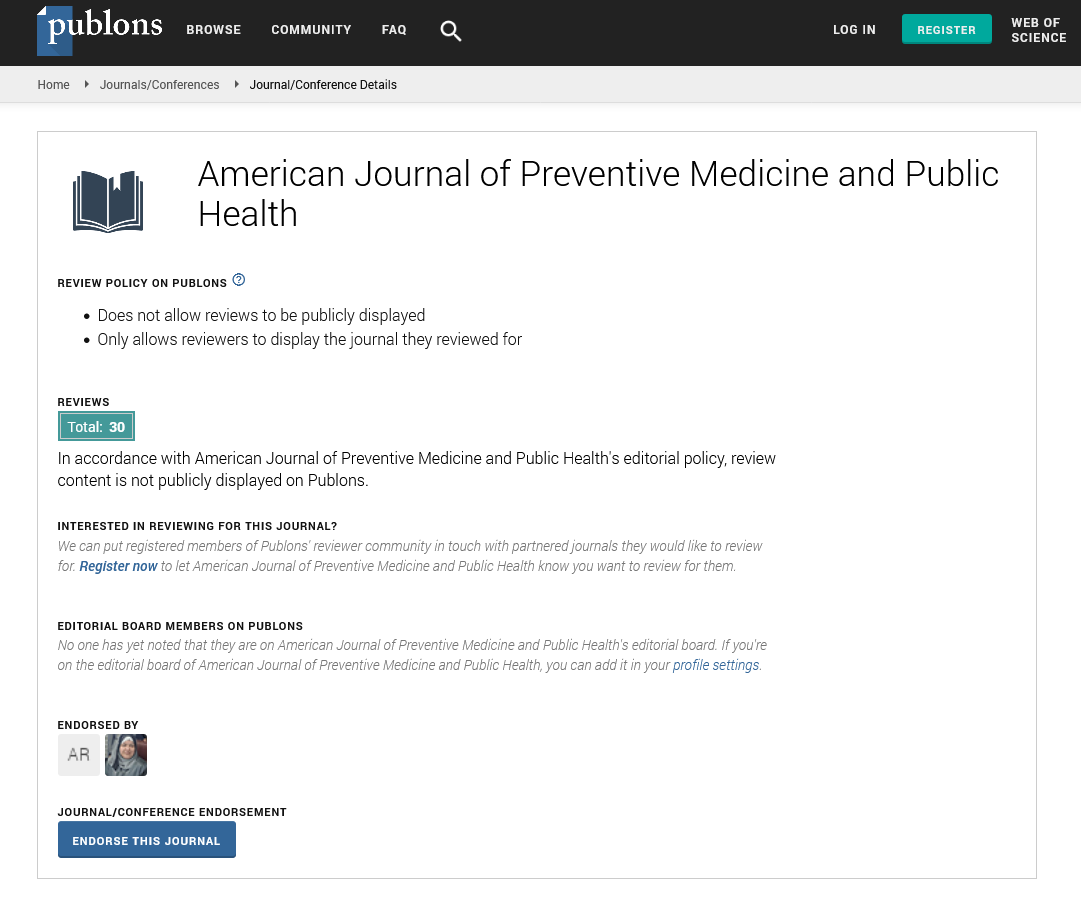Commentary - American Journal of Preventive Medicine and Public Health (2022)
Note on Stages of COVID-19 infection
Siddharth Sridhar*Siddharth Sridhar, Department of Microbiology Service, Hospital Clinic Universitario, INCLIVA Research Institute, Valencia, Spain, Email: sridharsrth@gmail.com
Received: 01-Apr-2022, Manuscript No. AJPMPH-22-62859; Editor assigned: 04-Apr-2022, Pre QC No. AJPMPH-22-62859 (PQ); Reviewed: 19-Apr-2022, QC No. AJPMPH-22-62859; Revised: 25-Apr-2022, Manuscript No. AJPMPH-22-62859 (R); Published: 02-May-2022
Description
Coronavirus Disease 2019 (COVID-19) is a contagious disease caused by the coronavirus 2, it creates Severe Acute Respiratory Syndrome (SARS-CoV-2). The contagious disease is an infectious disease that can be easily spread (that is, communicated) by a pathogen transmitted by direct or indirect contact with an affected individual. Before medical research discovers the causative agent, a disease is typically recognized to be contagious. The microbial pathogenesis is an attempt to explain how viruses cause disease.
The COVID-19 (coronavirus disease 2019) is a respiratory infection caused by the Severe Acute Respiratory Syndrome Coronavirus 2 (SARS-CoV-2), a coronavirus strain that causes the continuing COVID-19 pandemic. And the coronaviruses are a category of closely related RNA viruses that infect mammals and birds. Some cases of the common cold (which can also be caused by other viruses, particularly rhinoviruses) are mild, but more lethal strains can cause SARS, MERS, and COVID-19, which is causing a pandemic.
In cows and pigs, they cause diarrhea, while in mice, they cause hepatitis and encephalomyelitis. Here explain the infection of COVID-19 disease in stages:
According to how COVID-19 infection can be treated with pharmacological medicines, the disease can be categorised into three stages. Stage I refers to the early stages of an infection, when upper respiratory symptoms predominate.
Stage II is the pulmonary phase, during which the patient develops pneumonia and all of its symptoms; this stage is divided into two parts: Stage IIa, which occurs without hypoxia, and Stage IIb, which occurs with hypoxia.
Stage III is the most severe stage, during which the patient develops Acute Respiratory Distress Syndrome (ARDS), sepsis, and multi-organ failure.
A similar stereotyped course was proposed, with the first phase corresponding to the incubation period, the second phase corresponding to the viral phase, the third phase corresponding to the state of inflammatory pneumonia, the fourth phase corresponding to the brutal clinical aggravation reflected by Acute Respiratory Distress Syndrome (ARDS), and finally, in survivors, a fifth phase potentially including lung fibrosis and persisting in the form of “post-COVID” symptoms.
There is a lag between when a person becomes sick and when the first symptoms occur, as is common with infections. The COVID-19 has a median incubation period of four to five days, with the virus becoming infectious on one to four of those days. The symptoms appear in the majority of sick people two to seven days after exposure, and almost everyone has at least one symptom within 12 days. The incubation period is the time between exposure to a pathogenic organism, a toxin, or radiation and the manifestation of symptoms and signs also known as the latent phase or latency period. And the incubation period in a typical infectious disease refers to the time it takes for the multiplying organism to reach the threshold required to cause symptoms in the host.
In statistics and probability theory, the median is the number that divides the upper and lower half of a data sample, population, or probability distribution. In a data set, it’s commonly referred to as “the middle” value.
Finally the COVID-19, the majority of patients recover from the disease’s acute phase. However, some patients more than half of a group of home-isolated young adults–continue to have symptoms like weariness months after recovery, a condition known as chronic COVID, and long-term organ damage has been reported. Long-term studies are underway to learn more about the disease’s long-term consequences.
Copyright: © 2022 The Authors. This is an open access article under the terms of the Creative Commons Attribution NonCommercial ShareAlike 4.0 (https://creativecommons.org/licenses/by-nc-sa/4.0/). This is an open access article distributed under the terms of the Creative Commons Attribution License, which permits unrestricted use, distribution, and reproduction in any medium, provided the original work is properly cited.







